This is about the Cessna 182 Skylane RG („R182“), i.e. the non-turbo variant. It was built between 1978 and 1986. A friend of mine bought one of these last year. I got to fly it on Saturday for a few hours (practicing instrument approaches at Saarbruecken, Nancy and Zweibrücken) and will share some thoughts.
Here it is:
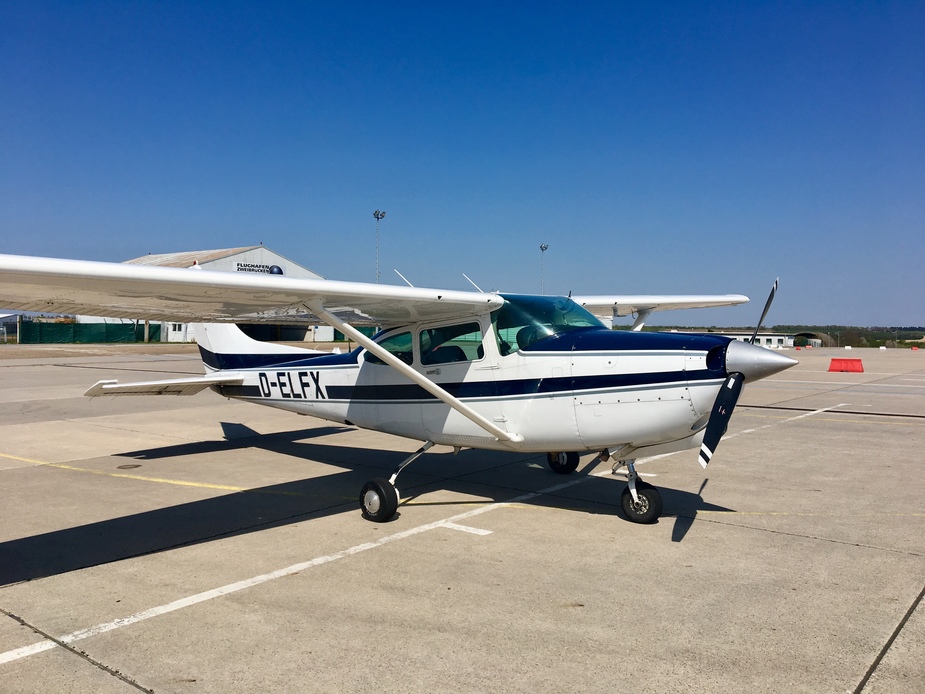
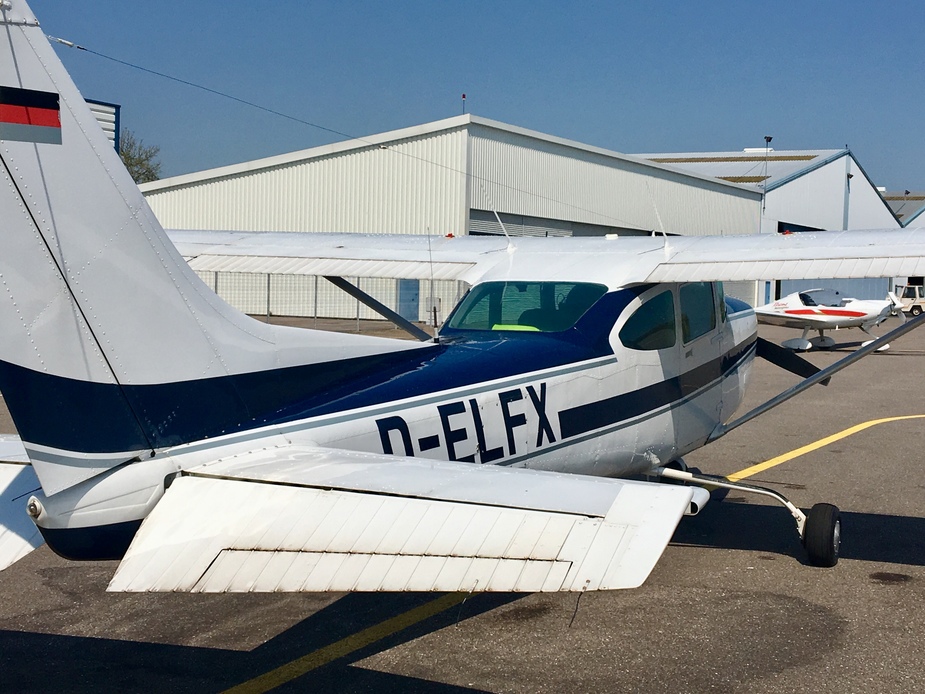
As with all the Cessna retracts, the gear is hydraulically operated, which is a bit of a concern/downside, of course.
It has the heavily downrated Lycoming O-540 engine producing 235hp at only 2400 RPM.
Some first few impressions:
Here we are, doing the above mentioned 150 knots on 13 GPH, at FL55.
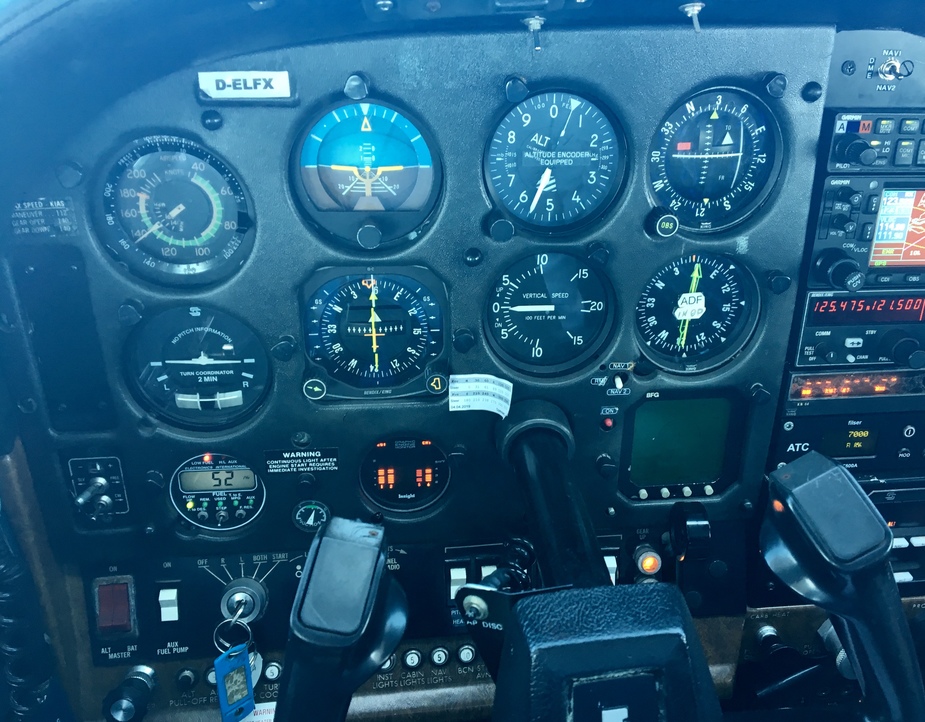
Here is the full panel view:
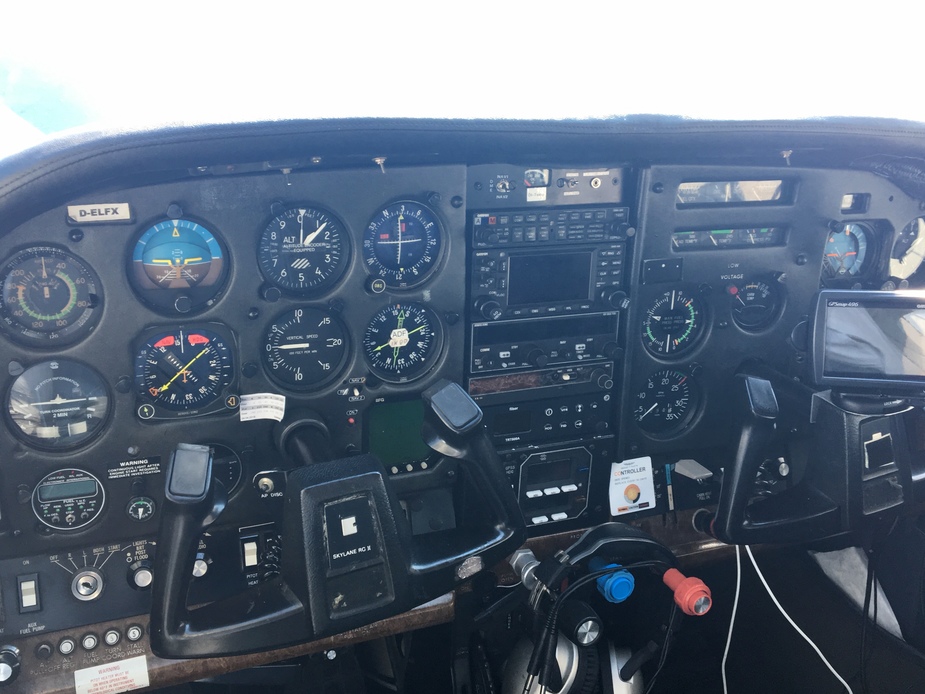
This one has a GNS430W and an STEC-60, with GPSS installed as an aftermarket item. Nice. Plus an engine monitor and fuel flow/totalizer instrument. It also has Flarm installed, even with external antennas, but a bit as expected, it proved pretty useless (but it DOES manage to get on one‘s nerves!).
For those who know only the 172, the cabin of the 182 is slightly wider, which is nice. For the rest, it is the standard Cessna comfort. Visibility outside is of course not as nice as in the Cardinal RG.
Same as in a 172, really:
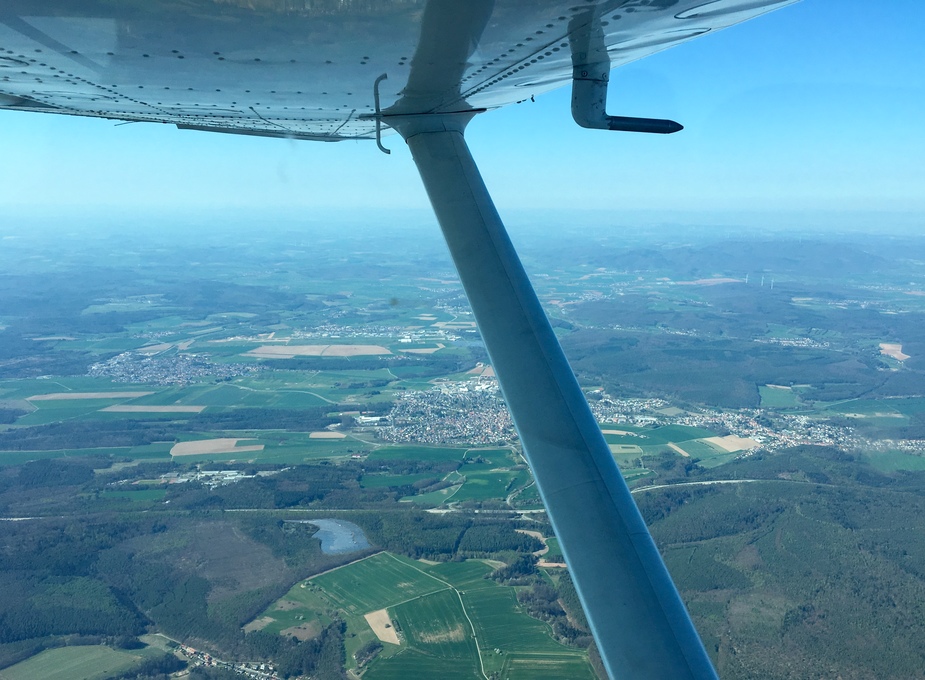
I‘ll post an update once I have completed my first real trip in it.
I though the RGs were all fuel injected. Was this carburetor engine a replacement?
Not at all. 172s, 182s, 182 Turbos all have carburetors. And no way to have one of these with fuel-injection. That comes only with the 177 and the 210.
The early 210A (fastback fuselage) or 210B (with rear windows), have the Continental -470S which is injected. The 210A is arguably a 182C retractable with an injected engine.
Nice write up, the 210A is supposed to deliver 160KTAS and assuming the landing gear has been well maintained, has a reasonable following.
A well presented 182C will do 145KTAS, not too far off the 182RG.
I saw one on the ramp when I flew in the US in 2016. I thought it looked like a great IFR plane for a family of 4. You seem to confirm this : good loading, fast, takes off quickly.
Can your friend take care of her until I can buy it ? In about 30 years 
I did a lot of flying in a customers C182RG and was impressed, a good solid aircraft .
boscomantico wrote:
172s, 182s, 182 Turbos all have carburetors. And no way to have one of these with fuel-injection.
The “restart” 172:s and 182:s — 172R, 172S, 182S, 182T and T182T — all have fuel-injected Lycoming engines.
Of course I know that, but the context of that post was the RG models only!
@Robert: yes, but these are all very vintage aircraft. If you compare like for like, you would have to do that with a 1981 182Q. But these are not mogas-capable), so one would maybe have to take a 1976P (I will again get my hand on exactly one of these later this year). These will do a max of 140 knots (usually more like 135), so we are talking 15 knots (a very typical speed difference between otherwise identical aircraft available in FG and RG versions). This has to be weighed against the slightly lesser sturdiness of the landing gear and additional landing gear woes. Fuel flow will be almost identical and I think that purchase prices (like for like) are also very similar nowadays. On balance, some will prefer the FG, others the RG.
…the 182C and 182D are definitely vintage, but with stabilator trim and the 185 fuselage have by reputation being the fastest of the type. With the nose gear clean up kit 150KTAS is not too fanciful. You are right, apples for apples there is around 15KTAS advantage for the RG.